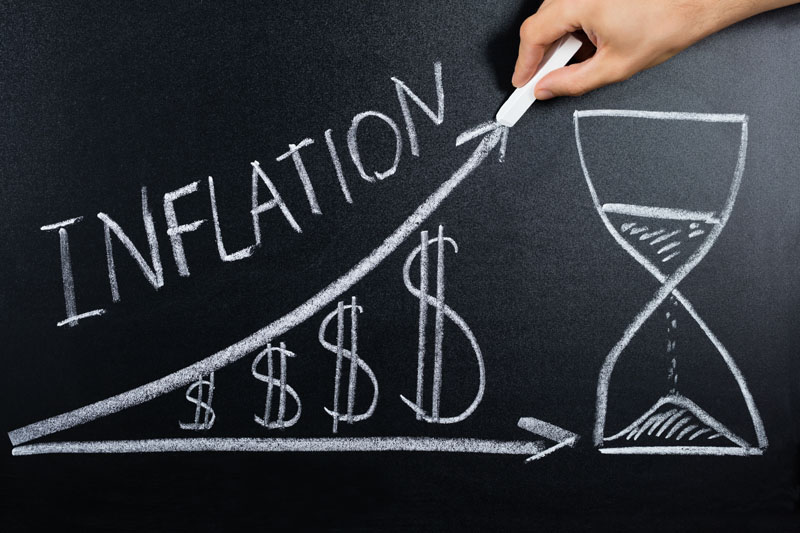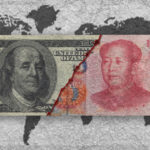Does Inflation Signal Lift-Off For Gold

(May 13th, 2021 - Graham Smith)
Important information: The value of investments and the income from them, can go down as well as up, so you may get back less than you invest
If inflation does take off this year, we won’t be able to say we weren’t told. The legendary investor Warren Buffett joined the growing ranks of nervy inflation watchers at the beginning of this month, describing America’s economic recovery as “red hot” and saying his company, Berkshire Hathaway, was seeing “very significant inflation”.
News this week from China fanned these flames. The prices charged for manufactured goods leaving Chinese factories leapt by 6.8% in April over the same month a year ago, raising fresh concerns about the prices consumers in the west will be charged for goods over the year ahead.
Then data out on Wednesday showed consumer prices in the US up by 4.2% in April compared with a year ago, and by the most over a 12-month period at any time since September 2008. While comparisons with last April – a month when inflation was particularly weak – were bound to accentuate an intervening year of rapidly changing economic conditions, prices still rose faster than anticipated.
Consumers will have already noticed supermarket prices rising of late on a per unit basis, after an extended period of “shrinkflation” in which many products have been reduced in size. Wholesale timber prices have now risen to record highs, following a year of home renovation and construction projects. With pent-up demand from the pandemic setting the scene for a big year for retail, an extended period of rising consumer prices seems plausible.
Not everyone agrees. Central banks – which are more than usually attentive to the achievement of near full employment – say they expect an uptick in inflation to be modest and transitory. Over the medium term, economic slack and the deflationary forces of new technologies may return inflation to low levels.
Markets, however, seem unconvinced about that. Stock markets became volatile again over the week as investors weighed the benefits of a recovering global economy against the possibility that rising inflation will mean higher interest rates sooner rather than later.
Government bond yields have been nudging higher since the start of 2021, and the gap between the yields on straightforward government bonds and government bonds that make higher payments as inflation rises has been widening.
At 1.7%, the yield on 10-year Treasuries is now about 2.5% higher than the yield on 10-year Treasury inflation-protected securities, or “TIPS”, compared with a gap of just under 2.0% at the end of last year.
Gold is one asset that stands to benefit from rising inflation. This is because inflation progressively reduces the buying power of paper currencies, including how much gold can be bought for a given amount of paper. Given that gold is in very limited supply and can’t be devalued in the way that paper currencies can, its value should tend to rise with inflation.
Over the very long term, there is good evidence to suggest this has been the case. The 1970s – a time of great budget deficits, currency devaluations, income and wages policies, rising oil prices and relentless money supply growth – reaffirmed the link between inflation and gold prices. Inflation in the US rose strongly over the decade and gold reached a record high of around US$850 per ounce in January 1980.
In more recent times, the link between gold and inflation has grown weaker. Part of this is down to gold’s attraction as a safe haven, which places it in high demand when economic conditions are weak and inflation is low. This happened in the aftermath of the global financial crisis of 2008, during the ensuing European sovereign debt crisis and again last year, as the coronavirus pandemic closed down economies.
The rapid money printing by central banks – quantitative easing (QE) – that characterised the response to the financial crisis spurred expectations inflation would rise, increasing the demand for gold. In the event, inflation stayed low, because QE caused excess money to flow mainly into assets like shares and property rather than the pockets of consumers. The long tail effects of fragile consumer confidence and worker insecurity may have played their part, though this matter is still a subject of great debate.
This time, however, really could be different. Governments have injected cash straight into the coffers of workers and businesses as well as healthcare systems. They plan to do a lot more too, upping investment in infrastructure with a renewed focus on green energy. Commodity prices have risen strongly as a result, driving up manufacturers’ costs, as we saw in China last week.
With economic growth forecasts having risen significantly since the end of 2020, inflation looks set to remain an issue for some time to come. Last week, the EU became the latest organisation to upgrade its growth forecasts, saying it now expects the eurozone to grow by 4.3% this year compared with the 3.8% it forecast as recently as February. In this environment, gold may, once again, prove a worthy component for an investment portfolio otherwise comprised mainly of shares and bonds.
Fidelity has one gold fund on its Select 50 list – the Ninety One Global Gold Fund. Better known, perhaps, under its previous name, Investec Global Gold, this fund invests in a diverse portfolio of gold mining companies worldwide. It also has the flexibility to buy physical gold ETFs and shares in companies that mine for other precious metals, and currently has a 4% exposure to silver.






